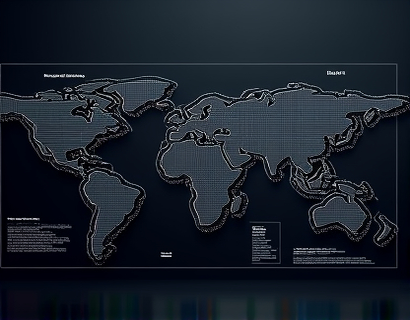Advanced Software for Graph Theory and Fluid Dynamics Research: Empowering Insights for Complex System Analysis
In the realm of mathematical modeling and fluid mechanics, researchers and engineers face the daunting task of analyzing and understanding complex systems. The intricacies involved in these fields demand sophisticated tools that can handle vast amounts of data, provide accurate simulations, and offer clear visualizations. Advanced software solutions for graph theory and fluid dynamics have emerged as pivotal in streamlining this process, enabling researchers and engineers to unlock new insights and drive innovation. This article delves into the capabilities and applications of these advanced tools, highlighting how they are revolutionizing the way complex systems are analyzed and optimized.
Enhancing Data Analysis with Advanced Software
The core functionality of advanced software in graph theory and fluid dynamics revolves around enhancing data analysis. These tools are designed to process and interpret large datasets with precision and speed. For graph theory, software solutions offer algorithms that can efficiently traverse and analyze network structures, identifying key nodes, paths, and clusters. In fluid dynamics, the software can simulate fluid flow, turbulence, and other dynamic behaviors, providing detailed insights into the underlying physics. By automating complex calculations and data processing, these tools save time and reduce the potential for human error, allowing researchers to focus on higher-level analysis and interpretation.
Advanced Visualization Techniques
Visualization is a critical component of understanding complex systems. Advanced software for graph theory and fluid dynamics includes powerful visualization tools that transform raw data into intuitive and informative graphics. For graph theory, visualization software can represent networks in various formats, such as adjacency matrices, force-directed layouts, and hierarchical diagrams. These visual representations help researchers identify patterns, anomalies, and relationships that might be difficult to discern from numerical data alone. In fluid dynamics, visualization tools can render 3D simulations of fluid flow, heat transfer, and other phenomena, providing a clear and comprehensive view of the system's behavior. Interactive features allow users to manipulate parameters in real-time, further enhancing the exploratory process.
Optimizing Complex System Performance
One of the primary goals in both graph theory and fluid dynamics research is to optimize system performance. Advanced software solutions offer a range of optimization algorithms and techniques that can be applied to various problems. For graph theory, optimization tools can be used to find the shortest path, minimum spanning tree, or optimal routing in networks. These algorithms are crucial for applications in telecommunications, transportation, and social network analysis. In fluid dynamics, optimization software can simulate and refine designs to minimize drag, maximize efficiency, and ensure stability. By leveraging these advanced tools, researchers can develop more efficient and effective solutions, leading to significant performance improvements.
Facilitating Groundbreaking Discoveries
The integration of advanced software in research has opened new avenues for groundbreaking discoveries. By providing precise and comprehensive analysis, these tools enable researchers to explore previously uncharted territories. In graph theory, the ability to analyze large and complex networks has led to new insights in areas such as epidemiology, where understanding the spread of diseases through social networks is critical. In fluid dynamics, advanced simulations have contributed to advancements in aerospace engineering, environmental science, and energy systems. The enhanced capabilities of these software tools have not only accelerated research but have also fostered interdisciplinary collaboration, bringing together experts from diverse fields to tackle complex challenges.
Applications in Various Industries
The applications of advanced software for graph theory and fluid dynamics extend across multiple industries, each benefiting from the unique capabilities of these tools. In the telecommunications industry, graph theory software helps design and optimize network infrastructures, ensuring reliable and efficient communication. For the automotive industry, fluid dynamics software is essential in aerodynamic testing and vehicle design, leading to more fuel-efficient and safer vehicles. In the energy sector, these tools assist in optimizing the flow of fluids in pipelines and turbines, improving overall system efficiency. In healthcare, graph theory applications aid in understanding disease transmission and developing targeted intervention strategies. The versatility of these software solutions makes them invaluable assets in a wide range of applications.
User-Friendly Interfaces and Scalability
To maximize the impact of advanced software, it is crucial that these tools are user-friendly and scalable. Modern software solutions are designed with intuitive interfaces that cater to both novice and expert users. Step-by-step guides, interactive tutorials, and comprehensive documentation help users quickly become proficient in using the software. Scalability is another key feature, allowing the tools to handle datasets of varying sizes and complexities without compromising performance. This flexibility ensures that researchers and engineers can adapt the software to their specific needs, whether they are working on small-scale projects or large, complex systems.
Integration with Other Technologies
The true power of advanced software for graph theory and fluid dynamics lies in its ability to integrate with other cutting-edge technologies. Many software solutions offer seamless integration with cloud computing platforms, enabling researchers to leverage the computational power of distributed systems. This integration facilitates the handling of massive datasets and complex simulations, reducing computation times and enhancing overall efficiency. Additionally, compatibility with data analytics and machine learning tools allows for a more holistic approach to data analysis, where insights from graph theory and fluid dynamics can be combined with predictive modeling and pattern recognition.
Case Studies and Real-World Impact
To illustrate the real-world impact of advanced software in graph theory and fluid dynamics, consider a few notable case studies. In one example, a research team used graph theory software to analyze the structural integrity of a large-scale power grid. By identifying critical nodes and vulnerabilities, they were able to implement targeted reinforcements, significantly improving the grid's resilience to failures. In another instance, an automotive company employed fluid dynamics software to optimize the aerodynamics of a new vehicle model. Through extensive simulations and iterative design refinements, they achieved a 10% reduction in drag, leading to improved fuel efficiency and performance. These case studies demonstrate the tangible benefits of advanced software in driving innovation and solving real-world problems.
Future Trends and Developments
The field of advanced software for graph theory and fluid dynamics is rapidly evolving, with ongoing research and development pushing the boundaries of what is possible. One emerging trend is the incorporation of artificial intelligence and machine learning algorithms, which can enhance the predictive capabilities and automation of these tools. AI-driven optimizations can identify optimal solutions more efficiently, while machine learning models can predict system behaviors based on historical data. Another area of development is the enhancement of multi-physics simulations, where software can simultaneously model multiple physical phenomena, providing a more comprehensive understanding of complex systems. As computational power continues to increase and algorithms become more sophisticated, the potential for breakthroughs in both graph theory and fluid dynamics research is immense.
Conclusion
Advanced software for graph theory and fluid dynamics has become an indispensable tool for researchers and engineers seeking to unravel the complexities of modern systems. By streamlining data analysis, enhancing visualization, and optimizing performance, these tools empower users to gain deeper insights and drive innovation. The versatility and scalability of these software solutions make them applicable across various industries, from telecommunications to healthcare. As technology continues to advance, the future of these tools looks promising, with the potential to unlock even more groundbreaking discoveries and optimize system performance in ways we have yet to imagine.










































